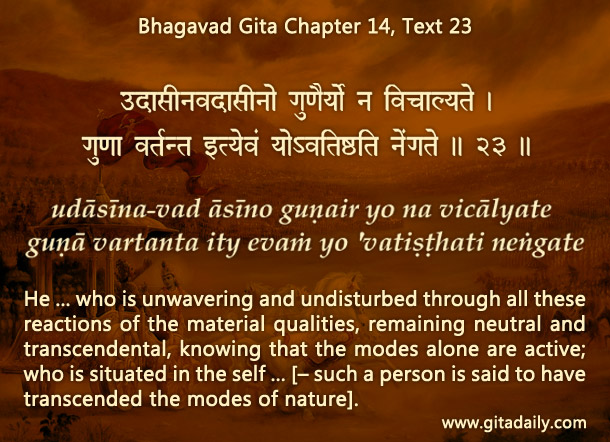Some people misunderstand the Bhagavad-gita’s recommendation to be detached as a call to be passive.
However, the Gita concludes with Arjuna’s resolve to give up indifference and inaction, which was his initial preferred choice; and to take up assertive action in the form of doing his kshatriya duty as a warrior. Yet it is undeniable that the Gita does indeed ask one to be equipoised in one’s actions – that however is not indifference, but detachment.
Such detachment ensures that our emotions don’t take over our judgment and become the sole basis of our actions. The Gita urges us to recognize that the emotions that come over us are not always our emotions. To the contrary, they frequently are default emotional responses to external stimuli that if we observe with indifference will pass, as the Gita (14.23) indicates.
The more we become free from our worldly attachments, the more we can become detached observers. And the more we can be detached observers, the more our emotional energy can be focused on Krishna and harnessed for making us devoted doers.
As reining in our emotions and living unemotionally is never easy, the Gita (14.26) urges us to channelize our emotions positively towards Krishna, the supreme spiritual reality. By so doing, we can harmonize our emotions and actions in loving service to Krishna.
Significantly, bhakti-yoga transforms this successive progression into a symbiotic integration, wherein we try to simultaneously focus on Krishna right from the beginning using our heart while also using our head to keep at a distance material emotions induced by temporary things. The higher spiritual joy of devotion makes detachment realizable and the undistractedness resulting from detachment makes the devotion more intense and strong, thereby making it easier to become both detached observers and devoted doers.
Explanation of article:



Leave A Comment